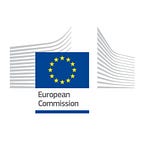White Paper on the Future of Europe
Reflections and scenarios for the EU27 by 2025
For generations, Europe was always the future.
It took off with the vision of Altiero Spinelli and Ernesto Rossi, political prisoners locked up by a fascist regime on the isle of Ventotene during the Second World War.
Their manifesto For a Free and United Europe painted a picture of a place in which allies and adversaries would come together to ensure that the “old absurdities” of Europe would never return.
Sixty years ago, inspired by that dream of a peaceful, shared future, the EU’s founding members embarked on a unique and ambitious journey of European integration. They agreed to settle their conflicts around a table rather than in battlefields.
They replaced the use of armed forces by the force of law. They opened up the path for other countries to join, reuniting Europe and making us stronger.
As a result, our troubled past has given way to a peace spanning seven decades and to an enlarged Union of 500 million citizens living in freedom in one of the world’s most prosperous economies. The images of battles in trenches and fields in Verdun, or of a continent separated by the Iron Curtain and the Berlin Wall, have been replaced by a Union standing out as a beacon of peace and stability.
The sacrifice of previous generations should never be forgotten. Human dignity, freedom and democracy were hard-earned and can never be relinquished. Even if the attachment to peace is not one that all of today’s Europeans can relate to in the same way as their parents or grandparents, these core values continue to bind us together.
The EU is now the place where Europeans can enjoy a unique diversity of culture, ideas and traditions in a Union covering four million square kilometres. It is where they have forged life-long bonds with other Europeans and can travel, study and work across national borders without changing currency. It is where the rule of law has replaced the rule of the iron fist. It is where equality is not just spoken about but continues to be fought for.
Despite this, many Europeans consider the Union as either too distant or too interfering in their day-to-day lives. Others question its added-value and ask how Europe improves their standard of living. And for too many, the EU fell short of their expectations as it struggled with its worst financial, economic and social crisis in post-war history.
Europe has always been at a crossroads and has always adapted and evolved.
Europe’s challenges show no sign of abating. Our economy is recovering from the global financial crisis but this is still not felt evenly enough. Parts of our neighbourhood are destabilised, resulting in the largest refugee crisis since the Second World War. Terrorist attacks have struck at the heart of our cities. New global powers are emerging as old ones face new realities. And last year, one of our Member States voted to leave the Union.
The current situation need not necessarily be limiting for Europe’s future. The Union has often been built on the back of crises and false starts. From the European Defence Community that never got off the ground in the 1950s, to the exchange rate shocks of the 1970s, through to aborted accessions and rejections in referenda in recent decades, Europe has always been at a crossroads and has always adapted and evolved.
In the last 25 years alone, the Treaties of Maastricht, Amsterdam and Nice have profoundly reformed and transformed a Union that has more than doubled in size. The Lisbon Treaty, and the decade-long debate that preceded it, has opened a new chapter of European integration that still holds unfulfilled potential.
Like generations before us, our response to the task ahead cannot be nostalgic or short-term. It should be built on a common perspective, and on the shared conviction that by coming together, each of us will be better off.
As 27 EU Heads of State or Government meet in Rome to mark the 60th anniversary of our common project, we must once again look forward.
This White Paper maps out the drivers of change in the next decade and presents a range of scenarios for how Europe could evolve by 2025. In doing so, it starts a debate that should help focus minds and find new answers to an old question:
What future do we want for ourselves, for our children and for our Union?
Thank you for reading the Introduction to the White Paper on the Future of Europe. You can find the full text here [PDF].
The White Paper will serve to steer the debate among the 27 Heads of State or Government and help structure the discussion at the Rome Summit and well beyond. It will also be used by the Commission as the starting point for a wider public debate on the future of our continent…
For More Information
